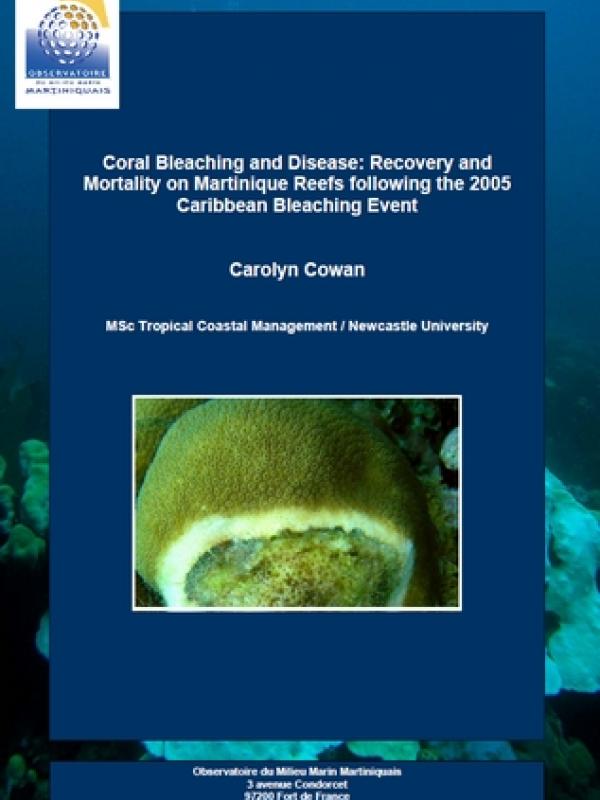
In the face of global warming, elevated seawater temperatures are predicted to cause an increased frequency and intensity of mass-bleaching events on a global-scale. Elevated sea surface temperatures in the western Atlantic from July to November, 2005 produced widespread bleaching of corals in the Caribbean. Martinique reefs experienced a total of 12 Degree Heating Weeks between mid-August and mid-October 2005, with seawater temperatures at monitored reef sites reaching temperatures of 30.4oC in September, 2005. Underwater surveys of the reefs in November indicated that there was widespread total bleaching of coral colonies on the reefs. This paper presents the effects of the 2005 bleaching episode on Martinique reefs, detailing the recovery and mortality rates of coral species and addresses the impacts of a recent disease outbreak causing lesions characteristic of yellow band disease and white plague. It does not appear that bleaching confers a fitness value on Martinique reefs, as mortality rates on bleached colonies were significantly higher than on those that did not bleach. Disease outbreaks are likely to prevail during periods of elevated seawater temperature while corals are stressed and experience depleted energy reserved and impaired defence systems. Thus, mortality estimations following bleaching seasons should not be attributed solely to bleaching – it is probable that other factors are acting synergistically with bleaching. Frequent monitoring of bleached reef sites is required to ensure that synergistic disturbances, exacerbating the stresses of thermal bleaching do not go unnoticed.